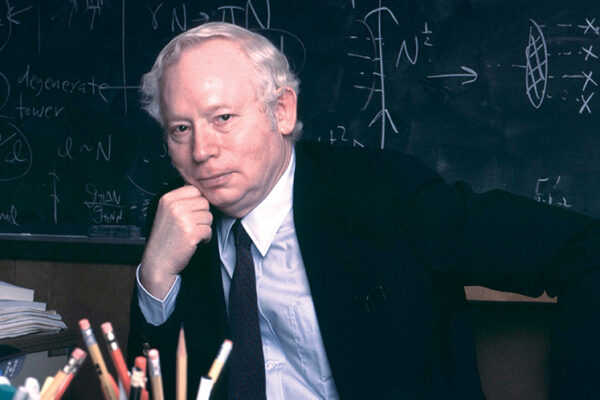AUSTIN, Texas — An elite prize among scientists worldwide is being given to Steven Weinberg, a professor of physics at The University of Texas at Austin, for his “continuous leadership in fundamental physics, with broad impact across particle physics, gravity and cosmology, and for communicating science to a wider audience.”
Weinberg, a Nobel Prize winner and the Jack S. Josey – Welch Foundation Chair in Science at UT Austin, will receive the 2020 Special Breakthrough Prize in Fundamental Physics. The award has been given only six times since 2012 and includes a $3 million prize for Weinberg.
“Steven Weinberg is a legend in his field, and his research has deepened our understanding of the universe in profound and seminal ways,” said UT Austin interim President Jay Hartzell. “He is now our university’s first Breakthrough Laureate, which is fitting for a person whose career has been defined by so many breakthroughs, both in his scientific research and as a teacher who has inspired generations of UT Austin students.”
Weinberg is the recipient of numerous scientific awards and is best known for showing that two fundamental forces in the universe that don’t appear to have much in common—electromagnetism and the weak nuclear force—are actually different manifestations of a unified electroweak force. The weak nuclear force, which plays a role in the fusion reaction that fuels the sun, can be described mathematically in the same way as electromagnetism, the force that holds a magnet to your fridge, holds atoms together in solids and liquids, and produces light.
“By uniting what had previously felt like two completely different ideas in physics, Steven Weinberg created one of the most beautiful theories in all of science,” said Paul Goldbart, dean of the College of Natural Sciences. “As he continues to make advances toward explaining mysteries about the workings of the universe, he is a worthy selection for this prize. Through his research, as well as his exemplary mentoring, teaching and writing for public audiences, he has been one of science’s best ambassadors to the world.”
The electroweak theory became the first pillar of the Standard Model of Particle Physics, a compact yet precise way of describing the properties of all the known fundamental particles and forces (apart from gravity) that make up the universe. What the Standard Model is to physicists goes beyond even what the periodic table is to chemists or what a color wheel is to painters. It provides order to a complex world, the distilled essence of reality, a tool for exploration and discovery.
At first, Weinberg’s electroweak theory, described in a three-page 1967 paper titled “A Model of Leptons,” didn’t get much traction. But it predicted properties of several then-unobserved elementary particles, the W, Z and Higgs bosons, and predicted the existence of “neutral weak currents” as a means by which certain elementary particles interact. All of these predictions were later confirmed experimentally.
By 1976, his paper had become the world’s most cited high-energy physics paper, a position it held for more than three decades. Weinberg’s electroweak theory, independently developed by Abdus Salam and which incorporated key insights from Sheldon Lee Glashow, garnered the three scientists the 1979 Nobel Prize in Physics.
In the decades since, Weinberg has continued his research in quantum field theory, elementary particle physics and cosmology. Among other efforts, he has searched for a “final theory of physics” that would elegantly explain all the known forces and particles in the universe, including gravity. He’s also recently been searching for a fresh approach to quantum mechanics—a weirdly counterintuitive set of tools for describing the way subatomic particles behave that feels more like an “Alice in Wonderland” dream than reality—that makes more sense.
Weinberg is the first winner of a Special Breakthrough Prize in Fundamental Physics on the UT Austin faculty. UT Austin alumnus Jim Allison, now at M.D. Anderson Cancer Center, won the Breakthrough Prize in Life Sciences in 2014. A ceremony to celebrate all the 2020 Breakthrough Prize winners has been scheduled for March 2021.
Weinberg has written hundreds of scientific articles, including some of the most highly cited articles of all time, with papers on general relativity, quantum field theory, cosmology and quantum mechanics, as well as numerous popular books including “To Explain the World” and “The First Three Minutes.”




